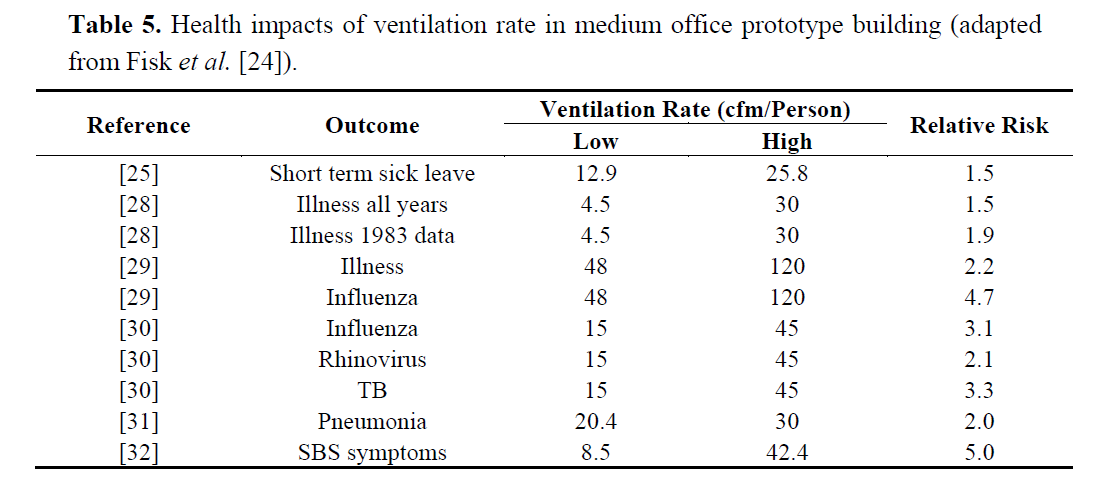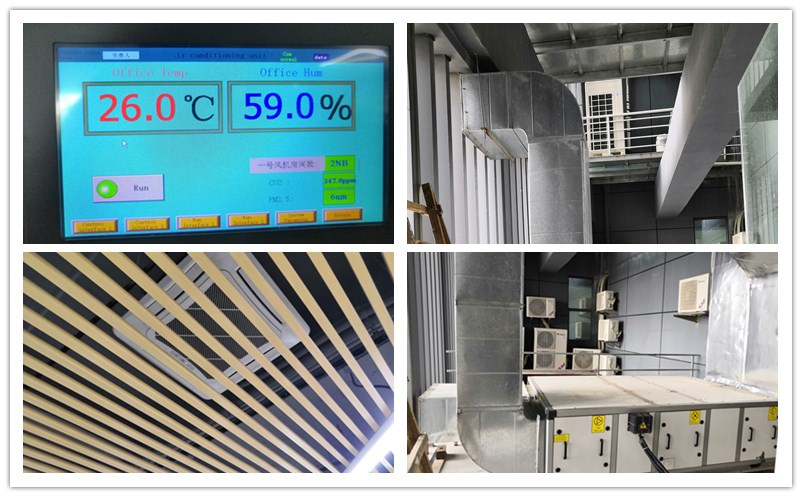You may hear from many other sources that ventilation is a very important factor to prevent a disease from spreading, especially for those are airborne, like influenza and rhinovirus. Indeed, yes, imagine 10 health individuals are staying with a patient with flu in a room with no or poor ventilation. The 10 of them will have a higher risk of getting flu, than those in a well-ventilated area.
Now, let’s take a look at the below table:

From “Economic, Environmental and Health Implications of Enhanced Ventilation in Office Buildings, by Piers MacNaughton, James Pegues, Usha Satish, Suresh Santanam, John Spengler and Joseph Allen”
Relative Risk is an index to show the correlation between two elements, in this case it is ventilation rate and the items in the table. (1.0-1.1: basically no relation; 1.2-1.4: little relation; 1.5-2.9: medium relation; 3.0-9.9: strong relation; above 10: very strong relation.)
It demonstrates that a lower ventilation rate contributes to a higher sick rate. In another research shows that about 57% of the sick leave (about 5days per year) is attributable to poor ventilation among workers. With respect to sick leave, the cost per occupant is estimated to be an extra $400 each year at low ventilation rates.
Moreover, a well-known symptom, SBS (sick building symptoms) is very common in a building that has a lower ventilation rate, meaning a higher concentration of CO2, TVOCs or other harmful particles like PM2.5. I personally experienced it in my last job. It gives a very bad headache, makes you sleepy, very slow at work, and some time hard to breathe. But when I get my current job at Holtop Group, where two ERVs were installed, everything changes and I can breathe fresh air at my working time, so I can concentrate on my work and never have sick leave.
You can see the energy recovery ventilation system our office! (Design introduction: The air conditioning system using VRV Air conditioner plus two units of HOLTOP Fresh Air Heat Recovery Air Handling Unit. Each HOLTOP FAHU supply fresh air in half of the office, with airflow of 2500m³/h per unit. The PLC control system drive the EC fan to high efficiency supply fresh air continuously in the office hall with lowest electric power consumption. Fresh air for rooms of meeting, fitness, canteen etc can be independently supply when necessary by the drive of electric damper and PLC thus to minimized the running cost. In addition, real-time monitoring of indoor air quality with three probes: temperature and humidity, carbon dioxide and PM2.5.)

That’s why I think fresh air is so important, I would shoulder our mission to “Bring Forrest-Fresh air to your life”. I hope more and more people can enjoy the fresh air and improve indoor air quality to keep healthy!
Besides of me, I think more people can take the responsibilities to bring the fresh air to their lives. It’s not a matter of costs and investment, as I mentioned in my previous article that the costs of increasing the ventilation rate is below $100 per year. While if you can have one less sick leave, you can save about $400. So why not provide a fresher environment for your workers or family? Therefore, they can have higher cognition and productivity and lower sick risk.
Thank you!
Post time: Feb-25-2020








